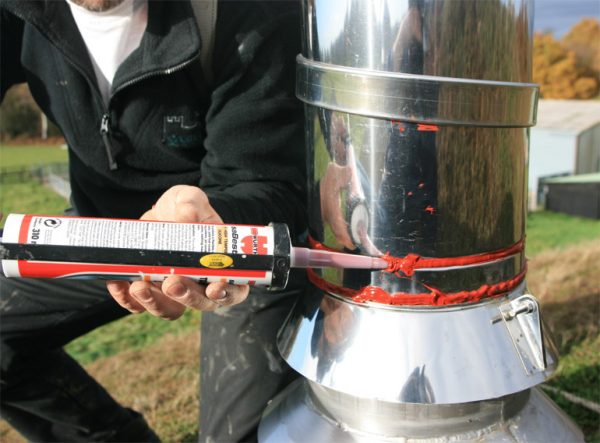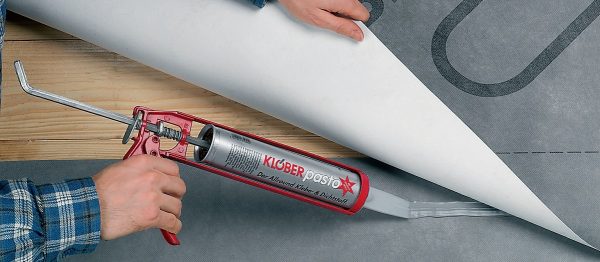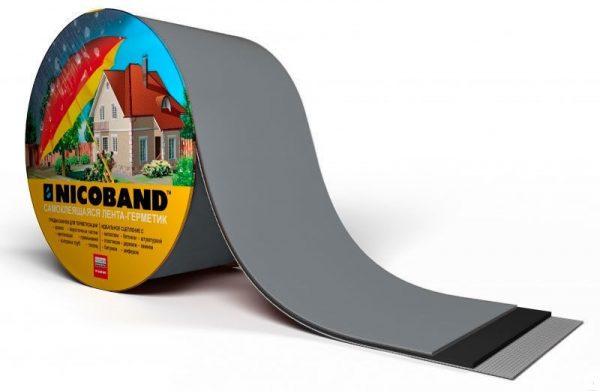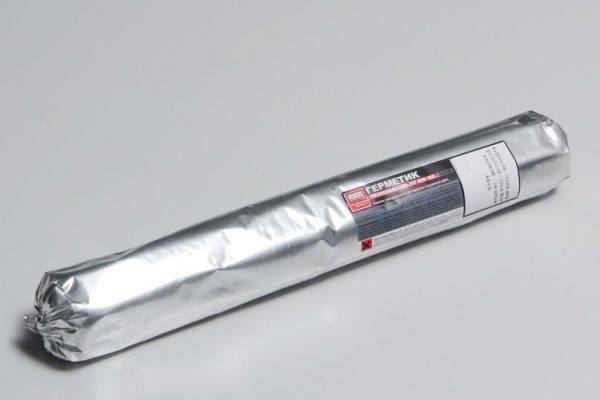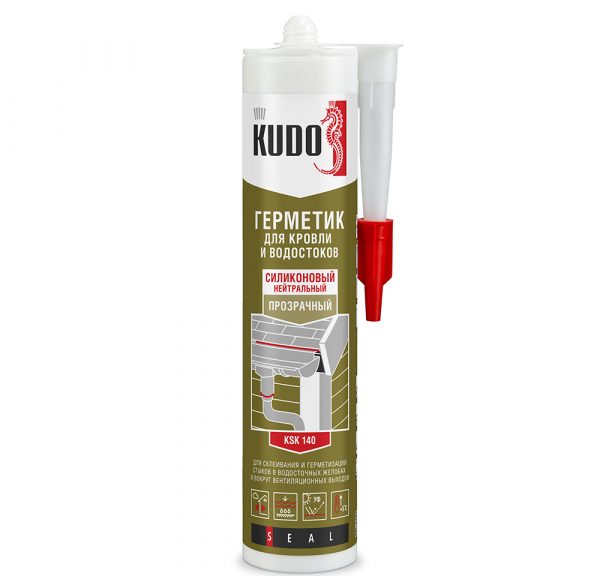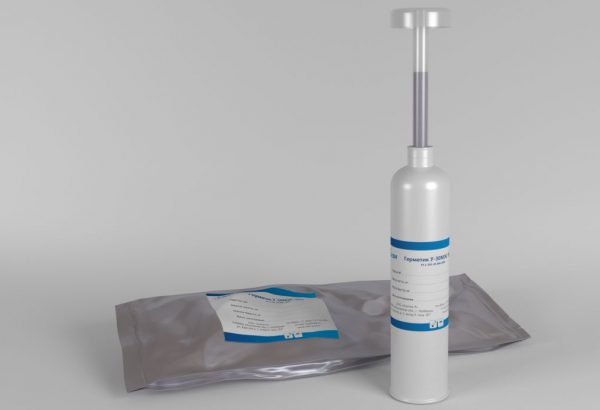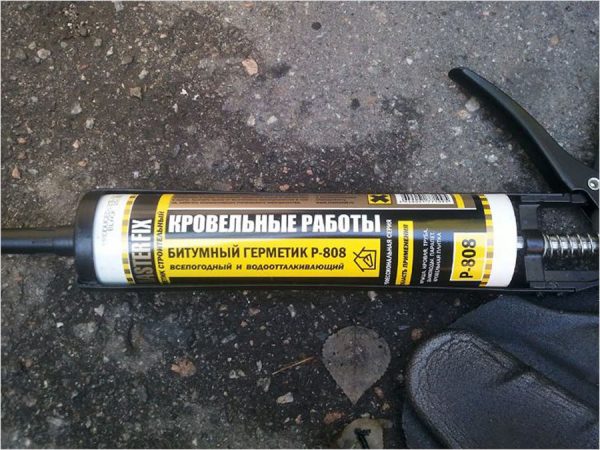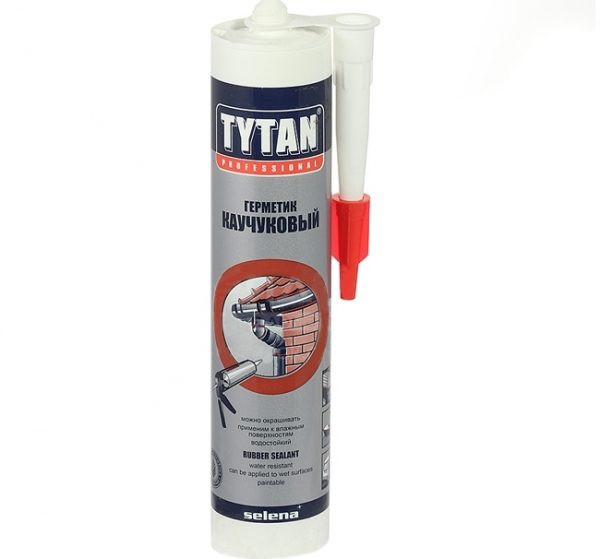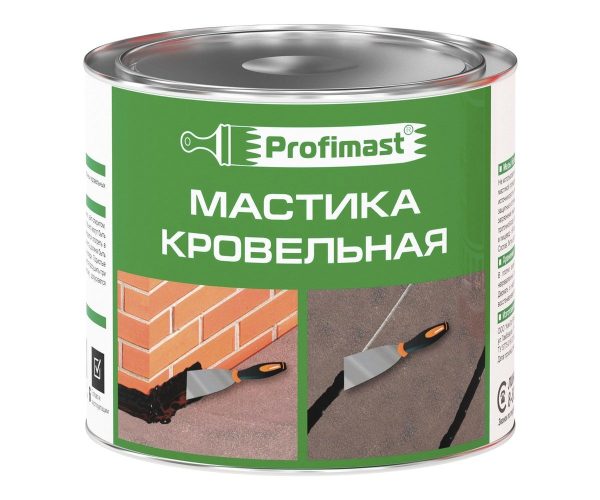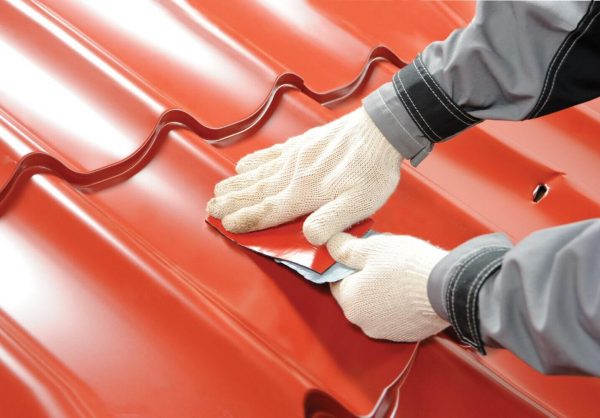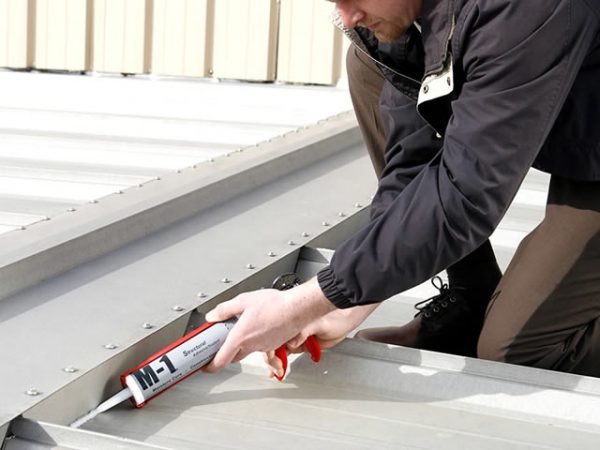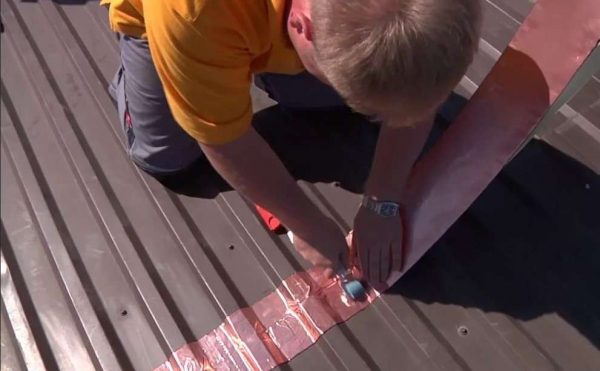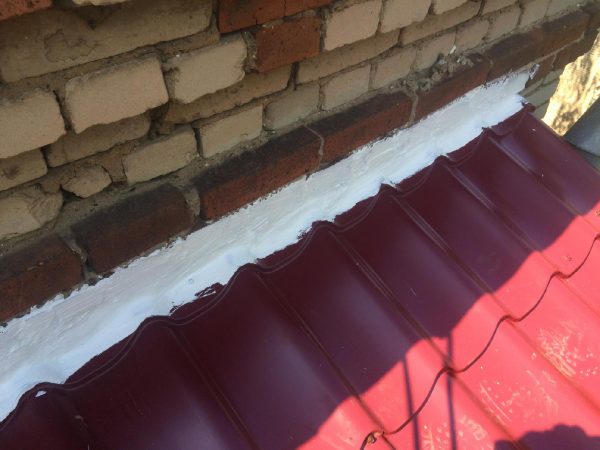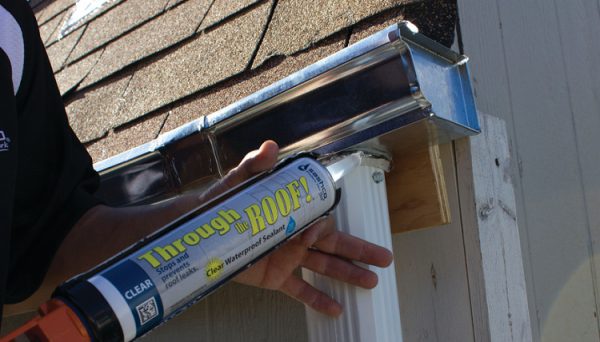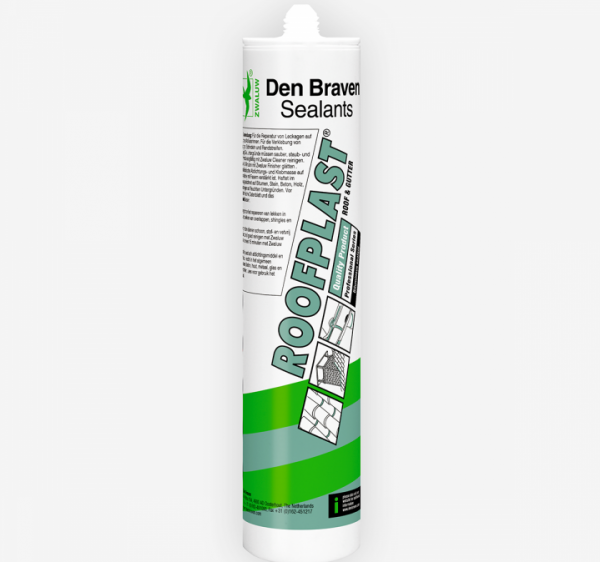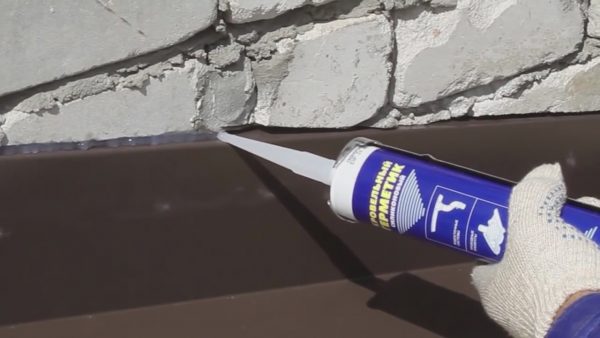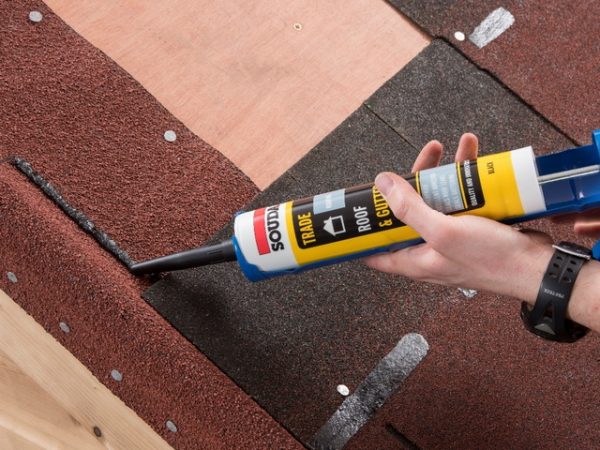Roof sealing is the most important stage of construction work. Simply laying and securing the materials is not enough: for good service, moisture must be completely eliminated from entering the structure. In order to seal the joints, a roofing sealant is used, which is also applied to complex areas and hazardous areas that can wear out faster and cause moisture to get inside.
- Sealant Application
- Why seal the roof?
- Types of sealants for metal roofs
- Polyurethane
- Silicone
- Polysulfide
- Bitumen
- Butyl rubber
- Rubber
- Acrylic
- Two component formulations
- Mastic for roofing
- Tape Sealants
- Choosing the right sealant for different coatings
- For metal roofing
- For corrugated roofing
- For a soft roof
- For a roof from a metal tile
- Where exactly are sealants used during roofing?
- Endovs
- Chimneys, ventilation pipes, other engineering structures
- Gutter systems
- Junction points to vertical walls
- Eaves nodes
- Popular brands
- Subtleties of working with sealant
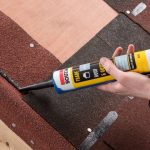
Sealant Application
Sealing compounds are very popular during construction and repair work. They are a viscous or pasty composition based on polymers. After application and hardening, sealants prevent fluid leakage through holes, gaps, openings and act as a waterproofing layer.
Most often, roofing sealant is used to seal joints and joints between sheets of base material. Sealing is especially in demand when arranging roofs with a small angle of inclination, from which water rolls with difficulty. Also, sealants are used to eliminate the occurring mechanical damage and other defects, to seal the attachment points:
- chimneys;
- antennas;
- ventilation shafts;
- wooden pillars;
- piers.
Sometimes a strong wind tears off part of the sheets, they are deformed, cracks appear on the surface. Cracks can also occur when trying to level the roofing material: even with high strength, the metal does not have sufficient elasticity and can be damaged by heavy loads.
to contents ↑Another possible reason for the use of sealant is a decrease in the protective properties of the anticorrosion coating, because it also has its own life, and when it expires, it deteriorates, exfoliates, and the surface begins to pass moisture through microdamages. In this situation, the sealant becomes a temporary solution that will help to wait out the cold season until the roof is overhauled.
Why seal the roof?
Sealing seriously increases the reliability and durability of the structure. Over time, any structure inevitably wears out and collapses if you do not take care of its waterproofing in advance. The sealant has the following actions:
- stops the flow of moisture inside the roofing cake;
- prevents wetting of a heater;
- protects the rafter system;
- prevents the appearance of fungus, rot;
- protects unprotected zones from aggressive substances falling out with rain;
- increases the overall service life of the structure;
- normalizes the thermal conductivity of the roof, insulates the house;
- eliminates leaks;
- is an adhesive substance for hydro vapor barrier.
Types of sealants for metal roofs
Most often metal is used for roofing, which, according to its technical characteristics and physical parameters, is well suited for this role. Despite its durability and aesthetic appearance, this material is susceptible to corrosion, which is accelerated due to regular temperature changes and the influence of atmospheric factors. Therefore, the sealant for the roof should be well suited for metal, be resistant to harmful effects and not peel off over time.
According to the type of transition to working condition, two groups of sealants are distinguished:
- Uncured. After application, the consistency practically does not change, therefore, tiny cracks penetrate the cracks. They can close up any problem areas, apply to the most complex structures, repair large roof areas. Sealants are available in the form of tapes, pastes. They withstand temperature differences in the range of –60 ... + 80 degrees.
- Curable. After the weld is completed, they harden under the influence of oxygen, water, UV radiation, or as solvents evaporate. To prevent the polymerization of the sealant from proceeding too quickly, curing inhibitors are added to the mass.
The composition of the sealants are also divided into several groups, while they differ in strength characteristics and other parameters.
to contents ↑Polyurethane
Made on the basis of polymerized resin, they are a viscous, viscous mixture with high toxicity. Easy to apply on any substrate, have many advantages:
- resistant to mechanical stress;
- work even with a strong decrease in temperature;
- not destroyed by moisture and ultraviolet radiation;
- freeze fast;
- serve for a long time;
- combined with all roofing materials;
- may be stained.
to contents ↑Disadvantages of polyurethane sealants: they are quite expensive and toxic, as they are diluted with organic solvents.
Silicone
Compositions based on silicone are sold in tubes, cartridges for guns, buckets for spray guns. They are the most popular, have an affordable price. Means are multifunctional, resistant to temperature fluctuations, the action of sunlight, quickly freeze. Silicone sealants are used for temporary and permanent waterproofing of roofs and other structures. Acid and neutral formulations are on sale: the latter are more expensive, but more durable, non-toxic and odorless.
to contents ↑Polysulfide
Thiokol (polysulfide) sealants are based on modified resins and bitumen. They must be applied in a special way - in the form of several thin layers, and not one thick layer, since oxygen and water vapor are required for curing. Sealants are characterized by a universal purpose, serve at least 15 years, withstand drops from –40 to +140 degrees.
Polysulfide sealants also have disadvantages. They dry for a long time - within 2–4 days, and the exact time depends on the thickness of the layer. The elasticity of the sealants is low: in hardness they resemble natural bitumen, therefore, they cannot compensate for linear vibrations of materials. With severe loads, there is a risk of microcracks on the sealed seams, after which they begin to leak moisture.
to contents ↑Bitumen
They are also made on the basis of bitumen, but the latter undergoes another technical processing and is enriched with polymer compounds, therefore it acquires other properties. Such sealants are well suited for metal and soft roofs, they are viscous, durable, and easily tolerate low and high temperatures. The properties and capabilities of these tools:
- excellent penetration;
- good elasticity and adhesion with most materials;
- metal protection against corrosion;
- no cracks after drying;
- lack of response to UV radiation;
- an obstacle to the reproduction of microbes;
- safety for humans, ecology;
- excellent moisture resistance.
Butyl rubber
Sealants of this group are made on the basis of isoprene and isobutylene, which form butyl rubber during copolymerization.Means are quite expensive, have excellent adhesion, elasticity, heat resistance, frost resistance, water resistance, and are characterized by a long service life. Butyl rubber sealants are sold in buckets, tubes, cartridges, in the form of tapes.
Rubber
Funds are made on the basis of artificial rubber, are considered universal, as they are suitable for different types of work. Withstand severe temperature extremes, solidify quickly, are characterized by low toxicity. Many compounds are not too resistant to mechanical stress.
to contents ↑Acrylic
Acrylic sealants are characterized by low price, long serve, have excellent quality. If you apply this composition to a dry surface, according to the instructions, the adhesion index will be the highest, and with any kind of coating. Acrylic sealants are odorless, environmentally friendly, solvent free. They are sold in various forms (banks, tubes, buckets, cartridges) and in a wide range of colors. Minus - not the highest water-repellent properties, since the composition contains water dispersion. It is better to use together with a sealing tape.
to contents ↑Two component formulations
Such agents may be based on various components: epoxy resin, urethane groups, or silicone rubber. They are represented by two components: a base and a hardener, which must be mixed together before use, after which the suitability of the sealants will be limited to minutes or hours, depending on the particular type. Then the polymerization of the base begins, it loses fluidity and solidifies.
to contents ↑Mastic for roofing
Roofing mastics are very popular in construction. They are viscous plastic masses based on resins, rubber, bitumen with the addition of finely divided fillers: talc, graphite and others. Bituminous mastic is much cheaper than polymer, but the latter is characterized by a high degree of adhesion and elasticity. More often mastics are used to harden and waterproof a soft roof.
to contents ↑Tape Sealants
The easiest way to apply is tape sealant, especially if the work is done by a beginner. The characteristics of the sealing tapes are as follows:
- resistance to temperature changes, sunlight;
- the ability to quickly apply and replace;
- high degree of tightness;
- sufficient mechanical strength.
to contents ↑Patches are cut from sealant tape, wide or narrow strips - depending on the need. The material is inexpensive, so the cost of sealing the roof will be low.
Choosing the right sealant for different coatings
Some compounds are considered universal, others are suitable only for a specific roofing material, but do not show high adhesion with other coatings.
For metal roofing
To make the product suitable for metal, it must have a reliable coupling with stainless steel, carbon steel, and alloys. A good sealant has high elasticity, is resistant to precipitation, does not collapse from vibration. Polyurethane, bitumen, bitumen-rubber sealants are best suited for a metal roof. It is such compositions that are characterized by a sufficient degree of plasticity, and therefore serve for a long time.
to contents ↑Some products can even be applied on wet surfaces, which is very important during emergency repairs. Silicone acid compounds for metal roofing can not be used: they provoke rusting.
For corrugated roofing
In order for the roof to serve faithfully, during installation, you should follow the recommendations for the maximum slope (14 degrees), as well as be sure to process the transverse joints of the corrugated sheets. A polyurethane sealant having high waterproofing properties is excellent for this material. It is important to install or repair profile sheets when they are completely dry and clean. The sealant is applied in a layer of 3 mm; if necessary, the seam is pasted over with a sealing tape.
to contents ↑For a soft roof
Flexible tiles - the most inexpensive and popular type of material, which is especially often used for the arrangement of country houses. Bitumen mastics and emulsions are used for complete sealing. For local repairs, tools like liquid rubber based on rubber and silicone are suitable. Sealing of joints and joints is carried out using sealant tape. All products except bituminous mastics are applied only on dry surfaces.
to contents ↑For a roof from a metal tile
In terms of properties and installation, the metal tile is similar to corrugated board. Usually, silicone sealants with increased resistance to UV radiation are used to seal cracks up to 5 mm in size. Longitudinal and transverse joints are treated with bituminous or polyurethane compounds, the seams between the chimney, ventilation outlets, antenna and roof are sealed with the same means.
to contents ↑Where exactly are sealants used during roofing?
Some areas are more susceptible to damage than others, therefore it is necessary to apply sealing compounds to them with special care.
Endovs
The structural elements of the roof, representing the angle at the junction of two slopes, are the most complex nodes and are considered key in the arrangement of the entire roof. An error in the design and formation of any valley causes intense leaks, and when snow accumulates, it can lead to roof collapse.
Since all precipitation converges into valleys, they are subjected to serious mechanical stresses and constantly experience climatic effects. Since the metal sheets in this area are cut, water can seep under individual elements. The sealant well lubricates the overlapping zones between the lower valleys, which rejects the water coming from the slopes. Without sealing, you can notice the leakage of the site even with its serious destruction and the presence of the need for expensive repairs.
to contents ↑
Chimneys, ventilation pipes, other engineering structures
In such places, sealing can be done with your own hands, as this is not difficult. The selected composition is processed all the joints along the perimeter, without missing a single plot. This will help to prevent roof leakage in the most “popular” places: at the junction of the base material and overhead structures.
Gutter systems
Drains are available on each roof, and for maximum tightness of the zones of connection of the gutters with the attachment point, it is necessary to use a specialized composition. Particularly carefully should be treated metal spillway system in the area of its docking with the roof.
to contents ↑Junction points to vertical walls
There is a high probability of leakage in the area of vertical sections and their joints with horizontal ones, if you do not pre-coat these areas with a reliable composition. In addition to sealing, it is important to strictly comply with the technology of building joints - with the use of shredding or sawing of brick surfaces.
Eaves nodes
Sealants help stick the membrane to the metal strip, reliably fixing and holding this material. When using high-quality composition, a strong wind will not tear off the membrane gasket, and water will not be able to seep under it. Also, the side junctions and overlaps of the joints of the profiled sheets are necessarily coated with a tool so that leaks do not appear during oblique rain or spring snow melting.
Popular brands
There are many products on sale that are suitable for sealing the roof. The most famous:
- "Titan" - easily withstands frosts, is used with any materials, perfectly seals flat and seam roofs;
- "Sazilast" - it can be applied even at sub-zero temperatures, after solidification it exhibits a high degree of adhesion;
- SOUDAL Aquafix - suitable for wet and underwater surfaces, allows for repairs in rainy weather, ideal for metal tiles and gutters;
- Ceresit - resistant even at abnormally low temperatures, after curing it resembles plastic, therefore it is not used on deformable substrates;
- RoofPlast - is based on bitumen, is considered one of the highest quality sealing agents.
Subtleties of working with sealant
To carry out roofing, you need to know the features of the use of a particular sealant. For example, two-component compounds must be mixed correctly: according to the instructions, in compliance with the proportions and terms. Mixing with a drill at medium speed for 10-15 minutes is usually recommended. It is advisable to perform the procedure in a warm room, since in the cold the mass is very thick and dilution with a solvent is prohibited.
Sealants can not be applied to wet concrete, icy surfaces. The result will not be high-quality if the cover is treated with sealant at a temperature below –25 and above +50 degrees. The thickness of the layer of the composition should not be more than 3-4 mm, while the influx and tear are excluded. It is easiest to apply sealant with a special gun, because when manually extruding, the seams are often obtained in curves. In order for the composition to lie evenly, the areas around the seams can be pasted over with masking tape, and only then begin applying the composition. After the final drying of the product, the roof will be ready for use: it will be reliably protected from leaks for a long time!

